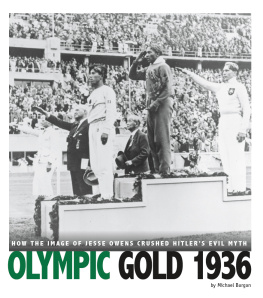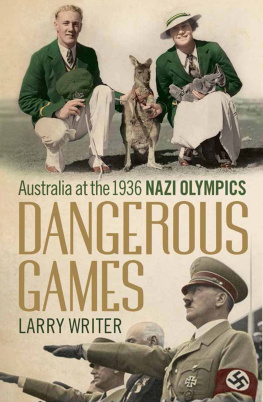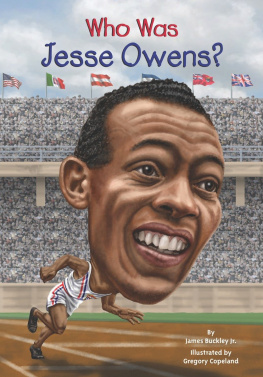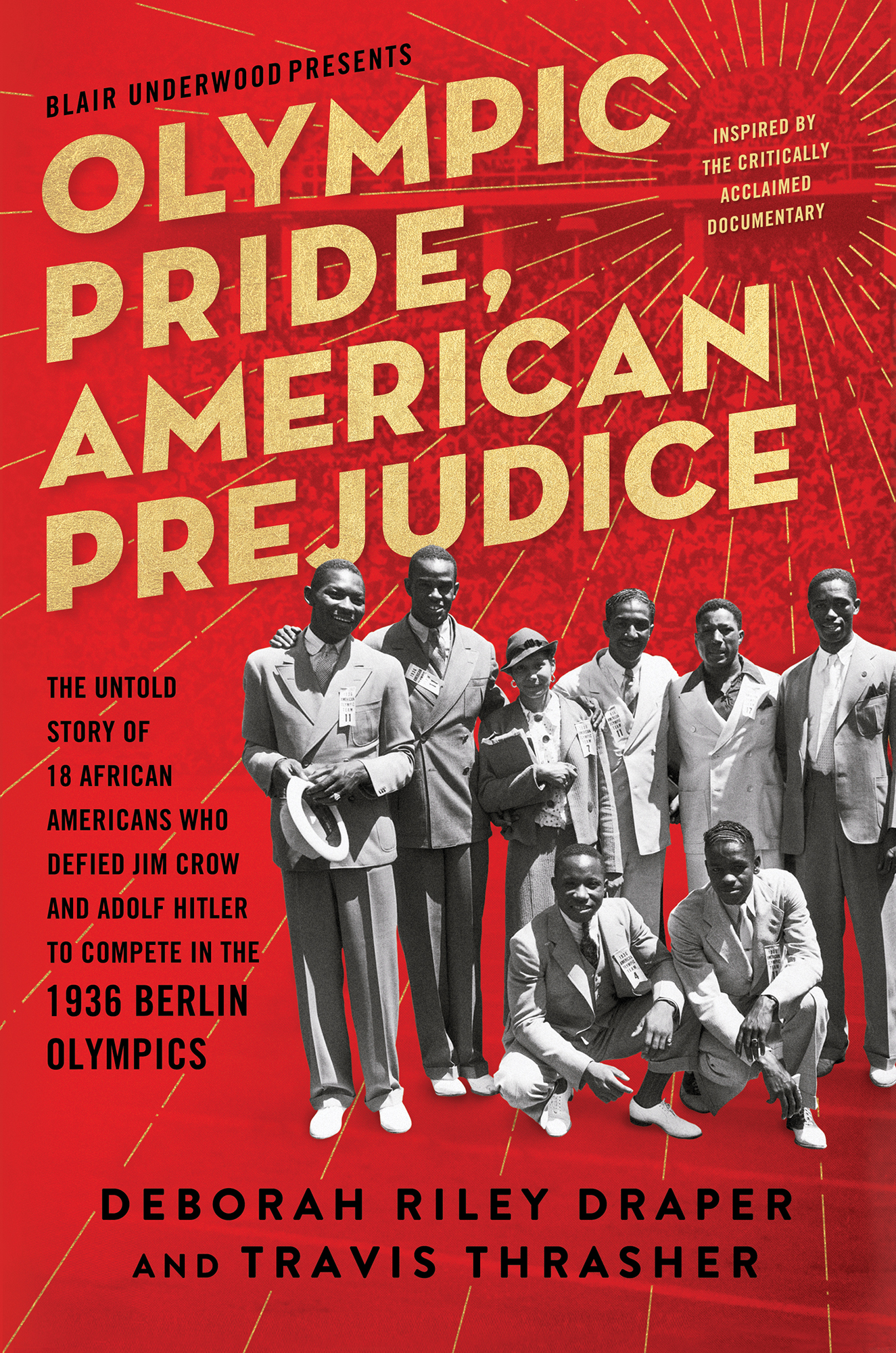CONTENTS
Guide

An Imprint of Simon & Schuster, Inc.
1230 Avenue of the Americas
New York, NY 10020
www.SimonandSchuster.com
Copyright 2020 by Olympic Pride, American Prejudice, LLC
All rights reserved, including the right to reproduce this book or portions thereof in any form whatsoever. For information, address Atria Books Subsidiary Rights Department, 1230 Avenue of the Americas, New York, NY 10020.
First Atria Books hardcover edition February 2020
 and colophon are trademarks of Simon & Schuster, Inc.
and colophon are trademarks of Simon & Schuster, Inc.
For information about special discounts for bulk purchases, please contact Simon & Schuster Special Sales at 1-866-506-1949 or .
The Simon & Schuster Speakers Bureau can bring authors to your live event. For more information, or to book an event, contact the Simon & Schuster Speakers Bureau at 1-866-248-3049 or visit our website at www.simonspeakers.com.
Jacket design by Philip Pascuzzo
Jacket photograph Courtesy Coffee Bluff Pictures
Library of Congress Cataloging-in-Publication Data has been applied for.
ISBN 978-1-5011-6215-2
ISBN 978-1-5011-6217-6 (ebook)
INTRODUCTION
T HE MIGRATION OF African Americans out of the South begins in earnest during World War I. Rampant racism, coupled with Jim Crow laws and lynchings, drive many black families to look north and west. Between 1880 and 1950, an African American was lynched more than once a week, and many of these atrocities remain unrecorded or undiscovered. The call of the opportunity to earn a living wage and the promise of a better, safer livelihood in cities in need of laborers to work in manufacturing and industrial production is answered by Southern African Americans. Ninety percent of African Americans live in the American South in 1910; for the next six decades 6 million African Americans would leave the South, cutting the population in half. And, ironically, by the time America elects its first African American president, African Americans are returning to the South and once again reshaping American demographics, economics, and political base.
John Brookss life benefits from the opportunities found north. Born in Vidalia, Louisiana, on July 31, 1910, he wont remember much about his birthplace after moving to Chicago. But one memory does stand out. He recalls the feel of the Vidalia fields under his bare feet as he constantly ran around the small town. His feet are tough and his legs are strengthened. Track becomes a natural passion for John. Later he not only becomes an elite athlete but a coach too when he meets a local girl by the name of Tidye Pickett. John knows that a young African American girl in the United States will not be afforded the same training and coaching as her counterparts. Brookss life changes in his seeking refuge 839 miles to the north.

African Americans stop near Shawboro, North Carolina, on their way to New Jersey, to pick potatoes. July 1940.
In the 1920s, the Albritton family, too, leaves the South. David Albritton is just seven years old when his family moves from Danville, Alabama, to Cleveland, Ohio. He barely remembers the lanky kid he met one Sunday afternoon when he was five years old watching his brother play baseball. David has no idea this boy who lived in the next county over will eventually become his best friend and fellow competitor.
Albritton meets Jesse Owens again in junior high school. Eventually both will board the SS Manhattan to compete in the Berlin Olympics.

African American going in colored entrance of Crescent movie house on a Saturday afternoon in Belzoni, Mississippi Delta, Mississippi, October 1939.
Saying good-bye to the shackles and shadows of Jim Crow, the Brooks, Albritton, and Owens families are among many who refuse to settle for separate seating and even different Bibles from their white counterparts. The laws down South require African Americans to attend segregated schools and churches, to enter for colored only bathrooms, to eat in a designated area of a restaurant, and to always sit at the back of a bus.
By 1936, despite escaping the racism in the South, these families will be in a country grappling with the Great Depression. There is real worry for thousands of African Americans that they will never be able to obtain the American dream. The country, still many years before the civil rights era, does not consider African Americans as full citizens.
Hope is often found in athletes like John Brooks, David Albritton, and Jesse Owens. They are among the eighteen black athletes who journey to Berlin to compete in the 1936 Olympics. They will eventually grow up to become soldiers, scientists, principals, and politicians. Sixteen men and two women who take their memories and their medals from Berlin and allow them to become a springboard to combat segregation and racism back home in America.
At the most notorious sports event ever staged, eighteen African Americans challenge discrimination on the world stage. Their presence in Berlin is a blow to racial prejudice on both sides of the Atlantic. The unprecedented effort is largely unknown, and their stories forgotten.
The most unlikely of figures foreshadow Hitlers defeat and a shift in American civil rights in the most spectacular of ways. Yet the world remembers only one of them, by the name of Jesse Owens.
This is the story of the others.
PART ONE
CHAPTER ONE THE GIRLS ARE FAST
1923
F OR MANY AMERICANS in 1923, times are good. The United States and the rest of the Western world roar through the twenties with their moving vehicles and motion pictures. The New York Yankees play their first game against the Boston Red Sox in The House That Ruth Built, the newly opened Yankee Stadium. Bessie Smith, The Empress of the Blues, sings her soulful hits on the radio. Magician Harry Houdini mesmerizes crowds with his stunts and tricks. The country unexpectedly inherits a new leader when President Warren G. Harding has a fatal heart attack on August 2 and Vice President Calvin Coolidge becomes the thirtieth president.
Yet amid an economic boom that doubles Americas wealth from 1920 to 1929, racial unrest only intensifies as Jim Crow laws take hold of the country, spurring the revival of the Ku Klux Klan, whose membership grows to 5 million people. The public becomes accustomed to Klan members, adorned in their hooded white robes and carrying American flags, marching down main streets in parades, proudly included as part of the festivities.
















 and colophon are trademarks of Simon & Schuster, Inc.
and colophon are trademarks of Simon & Schuster, Inc.
